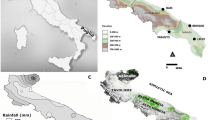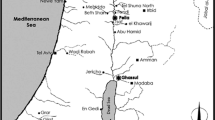Abstract
Olive tree cultivation in theMediterranean goes back to ancient times. Evensince the Roman Age, olive cultivation spreadto the entire Mediterranean basin. Thislongevous tree integrates and identifieseconomically, socially, and culturally theinhabitants of this basin and determines itsrural landscape. For the residents of theMediterranean, olive oil constituted the mainsource of nutritional fats, their most valuableexport product, and was identified with theirculture. Even now, olive cultivation has amultiple importance for the Mediterranean. Theolive groves, which grow mostly on inclined,shallow, and low fertility soils, and onhand-made stone terraces, have limited wateringrequirements and sustain the fragile naturalresources of the Mediterranean. Today,olive cultivation in the Mediterranean is anadditional income source and supports thepopulation in rural areas during the winterperiod, which profit from summer and seatourism activity. Although anagro-ecosystem, the olive grove resembles thenatural Mediterranean ecosystem and abandonmenttransforms them into natural Mediterranean typeforests. Their change of use from olivecultivation to pasture degrades the ecosystemand decreases the natural resources, because ofover-grazing. At this time, two major factorsthreaten the traditional olive cultivation (i)the competition of the intensive olive grovesin plain and irrigated areas and (ii) thecheaper seed-oils, which intensify theabandonment of traditional olive groves andchange them into pasture, resulting in thedeterioration of the ecosystem. Olivecultivation has left its mark on life in theMediterranean and has contributed to thesustainability of natural resources.Nevertheless, it succumbs under the pressure ofcurrent socioeconomic situations. Today, theconservation of olives in productionconstitutes a necessity for the fragileMediterranean ecosystems and a challenge foreverybody involved.
Similar content being viewed by others
References
Alvarado, M. (1998). “Es el olivar un cultivo desequilibrado? Potenciacion de otiorrico (Othiorrhychus cibricollis), gusanos blancos (Mellolontha papposa), abichado (Euzophera pinguis), coccinila (Saissetia oleae), y acaros (Aceria oleae) en las nuevas plantaciones.” Phytoma 102: 116–122.
Alvarado, M., M. Civantos, and J. M. Duran (1997). “Plagas.” In D. Barracco, R. Fermadez-Escobar, and L. Rallo (eds.), El cultivo del olivo (pp. 401–459). Madrid: Junta de Andalousia and Editiones Mundi-Prensa.
Angles, S. (1999). “The changes in the olive-growing geography of Andalusia.” Olivae 78: 12–22.
Arambourg, Y. (1986). Traité d'entomologie oléicole. Madrid: Editions International Olive Oil Council.
Arhonditsis, G., C. Giourga, and A. Loumou (2000). “Ecological patterns and comparative nutrient dynamics of natural and agricultural Mediterranean-type ecosystems.” Environmental Management 26(5): 527–537.
Beaufoy, G. (1998). “The reform of the CAP olive-oil regime: What are the implications for environment?” Hampshire: European Forum on Nature Conservation and Pastoralisme. Occasional publication No 14.
Besnard, G. and A. Berville (2000). “Multiple origin for Mediterranean olive (Olea europea L. subsp. europea) based upon mitochodrial DNA polymorphisms.” Comptes Rendus de l'Academie des Sciences, serie III 323: 173–181.
Besnard, G., P. Baradat, and A. Berville (2001). “Genetic relationships in the olive (Olea europea L.) reflect multilocal selection of cultivars.” Theoritical and Applied Genetics 102: 251–258.
Bonazzi, M. (1997). “Les politiques Euro-Mediterraneennes et l'huile d'olive: Concurrence ou partage du travail?” MEDIT 3: 27–32.
Braudel, F. (1979a). La Mediterranée et le monde mediterranéen a l'époque de Philippe II, tome premier, 4th edn. Paris: Librairie Armand Colin [Greek translation, 1991].
Braudel, F. (1979b). La Mediterranée et le monde mediterranéen a l'époque de Philippe II, tome premier, tome deuxieme, 4th edn. Paris: Librairie Armand Colin [Greek translation, 1997].
Chatteron, L. and B. Chatteron (1981). “Compatting desertifi-cation in winter rainfall regions of North Africa and Middle East.” Outlook on Agriculture 10(8): 397–402.
Cilenti, G. (1998). “The olive oil sector in Italy: How it looks.” Olivae 73: 12–15.
Cirio, U. (1997) “Agrochemicals and environmental impact in olive farming.” Olivae 65: 32–39.
Civantos, M. (1995). “Development of integrated pest control in Spanish olive orchards.” Olivae 59: 75–81.
Civantos, M. (1998). “Sanidad del olivar.” Vida Rural 70: 50–52.
Crovetti, A. (1996). “Plant protection. Development of methodologies and the protection of production and the environment.” In World Olive Encyclopedia (pp. 225–250). Madrid: International Olive Oil Council.
Debusshe, M. and P. Isenmann (1985). “La regime alimentaire de la Grive musicienne (Turdus filimelos) en automne et en hiver dans les Garrigues deMonpellier (France Mediterranee) et ses relations avec l'ornithochorie.” Terre et Vie 40: 379–387.
Drogue, S. (2000). “Modelling of the European community olive oil market.” Olivae 80: 8–11.
Ferro-Lazzi, A. and S. Sere (1989). “The Mediterranean diet: An attempt to define the present and past composition.” European Journal of Clinical Nutrition 43(2): 13–29.
Finlayson, J. C. (1981). “Seasonal distribution, weights and fat of passerine migrants at Gibraltar.” Ibis 123: 88–95.
Fresco, L. O. (1996). Agriculture in the Lower Guadalhorce Valley. Sustainable Land Use. Practical Guide for the Alora Region, Spain. Wageningen, The Netherlands: Agricultural University.
Garcia, D. (1992). “Les elements de pressoir de Lattes et l'oleiculture antique en Languedoc, Lattara 5.” Lattes: 327–358.
Giourga, C. (1991). The Change in Traditional Pattern of the Land Management in the Aegean Archipelago: The Impact in the Island Ecosystems. Ph.D. Thesis, University of the Aegean, Department of Environmental Studies, Mytilini, Greece [in Greek with English summary].
Giourga, C., A. Loumou, N. S. Margaris, M. Theodorakakis, and S. Koukoulas. (1994). “The olive groves in the Aegean.” In D. Rokos (ed.), Sciences and Environment at the End of the Century: Problems - Perspectives (pp. 334–344). Athens: N.T.U.A. and Alternative Editions [in Greek].
Giourga, H., N. S. Margaris, and D. Vokou. (1998). “Effects of grazing pressure on succession process and productivity of old fields on Mediterranean islands.” Environmental Management 22(4): 589–596.
Graaff de, J. and L. A. A. J. Eppink (1999). “Olive oil production and soil conservation in Southern Spain in relation to EU subsidy policies.” Land Use Policy 16: 259–267.
Grigg, D. (1995). “The geography of food consumption: A review.” Progress in Human Georgaphy 19(3): 331–353.
Guzman Alvarez, J. R. (1999). “Olive cultivation and ecology: The situation in Spain.” Olivae 78: 41–49.
Iakovidou, O. (1988). The Impact of the Tourism Development in the Rural Society of Chalikidiki, Greece. Ph.D. Thesis, Department of Agronomy, Aristotelian University of Thessaloniki, Thessaloniki, Greece [in Greek with English summary].
IOOC (International Olive Oil Council) Economic Committee (2000). “The world market for olive oils: Ongoing trends.” Olivae 82: 16–19.
Jacotot, B. (2001). “Interet nutritionnel de l'huile d'olive.” Olivae 86: 27–29.
Jordano, P. and C. M. Herrera (1981). “The frugivorous diet of Blackcup populations Sylvia atricapilla, wintering in Southern Spain.” Ibis 123: 502–507.
Kakridis, I.Th. (1986). Greek Mythology, Tome II. Athens: Editons Ekdotiki of Athens [in Greek].
Katakouzinos, D. (1957). Les sols grecs. Athens: National Press [in Greek].
Katakouzinos, D. (1968). Pedology and Fertilization. Athens: Editions Spyros Spyrou [in Greek].
Katakouzinos, D. (1969). The Olive Tree and Its Fertilization. Athens: Editions Spyros Spyrou [in Greek].
Lebeau, R. (1991). Les grandes types de structures agraires dans le monde, 5th edn. Paris: Masson.
Letsas, A. (1949). Mythology of Agriculture, Tome I. Thessaloniki, re-edition (1989). Athens: Agricultural Bank of Greece [in Greek].
Levitt, T. (1983). “The globalization of markets.” Harvard Business Review 65(3): 92–102.
Loumou, A. (1994). The Contribution of the Part-Time Holdings in the Economic and Social Development Compared with the Full-Time Holdings - The Case of Beotia. Ph.D. Thesis, Department of Agronomy, Aristotelian University of Thessaloniki, Thessaloniki, Greece [in Greek with English summary].
Loumou, A., C. Giourga, P. Dimitrakopoulos, and S. Koukoulas (2000). “Tourism contribution to agro-ecosystems conservation: The case of Lesvos island, Greece.” Environmental Management 26(4): 363–370.
Luchetti, F. (1993). “The international olive oil trade.” Olivae 45: 16–18.
Margaris, N. S. (1980). “Structure and dynamics of mediterranean type vegetation.” Portugaliae Acta Biologica 16: 45–58.
Margaris, N. S. (1987). “Desertification in the Aegean islands.” Ekistics 323/324(54): 132–136.
Margaris, N. S. (1988). Agriculture and Environment in the Department of Lesvos. Mytilini, Greece: University of the Aegean [in Greek].
Margaris, N. S., Th. Mardiris, and G. Chairopoulos (1988). “The 'retreat' of olive groves-forest.” Proceedings of Scientific Meeting, The Aegean Olive Groves, February 25- 27 (pp. 18–25). Mytilini, Greece: Edition Elaiourgiki [in Greek].
Mazoyer, M. and L. Roudart (1998). Histoire des agricultures du monde, du neolithique a la crise contemporaine. Paris: Seuil.
Mili, S. (1999). “The olive oil sector: International challenges and future scenarios.” Olivae 75: 8–16.
Munoz-Cobo, J. (1990). “Evolucion de la avifauna nidificante en olivares viejos de Jaen.” Testudo 1: 99–117.
Niethammer, G. (1966). “Vogelwelt Kretas im Winter.” Anzeiger der Ornithologischen Gesellschaft Bayeres 7(Sonderheft): 726–731.
Oikonomidou, E. (1969). Geobotanic Researsch of Skiathos Island. Athens, Greece: Athens Library of Educational Society.
Pavlidis, G. A. (1976). The Flora and the Vegetation of Sithonian Peninsula in Chalikidiki, Greece. Ph.D. Thesis, Department of Biology, Aristotelian University of Thessaloniki, Thessaloniki, Greece [in Greek].
Polunin, O. and A. Huxley (1987). Flowers of the Mediterranean. London: Chatto & Windus.
Romero, L. R. (1998). “Olive farming in the age of science and innovation.” Olivae 72: 42–51.
Sereni, E. (1964). Histoire du paysage rurale Italien. Paris: Julliard.
Sifnaiou, E. (1996). Lesvos, Economic and Social History (1840- 1912). Athens, Greece: Edition Trochalia.
Spennemann, D. H. R. and R. Allen (2000). “From cultivar to weed: The spread of olives in Australia.” Olivae 82: 44–46.
Suarez, F. and J. Munoz-Cobo (1984). “Las comunidades de aves invernantes en cuatro medios diferentes de la provincia de Cordoba.” Donana Acta Vertebrata 11: 45–63.
Theodorakakis, M. (1995). Potentiality and Management of Olive Groves in Aegean Islands. Ph.D. Thesis, Department of Environmental Studies, University of the Aegean, Mytilini, Greece [in Greek with English summary].
Tsirtis, E. (1988). “Perspective of olive groves cultivation in the Aegean islands.” Proceedings of Scientific Meeting, The Aegean Olive Groves, February 25- 27 (pp. 55–64). Mytilini, Greece: Edition Elaiourgiki [in Greek].
Turril, W. B. (1929). The Plant Life of the Balkan Peninsula. Oxford: Clarendon Press.
Vokou, D. (1988). “The olive groves as natural ecosystems.” Proceedings of Scientific Meeting, The Aegean Olive Groves, February 25- 27 (pp. 5–17). Mytilini, Greece: Edition Elaiourgiki [in Greek].
Warren, A. (1986). “Productivity, variability and sustainability as criteria of desertification in Europe.” In R. Fantechi and N. S. Margaris (eds.), Desertification in Europe (pp. 83–94). Boston: D. Reidel Publishing Company.
Author information
Authors and Affiliations
Corresponding author
Rights and permissions
About this article
Cite this article
Loumou, A., Giourga, C. Olive groves: ``The life and identity of the Mediterranean''. Agriculture and Human Values 20, 87–95 (2003). https://doi.org/10.1023/A:1022444005336
Issue Date:
DOI: https://doi.org/10.1023/A:1022444005336




